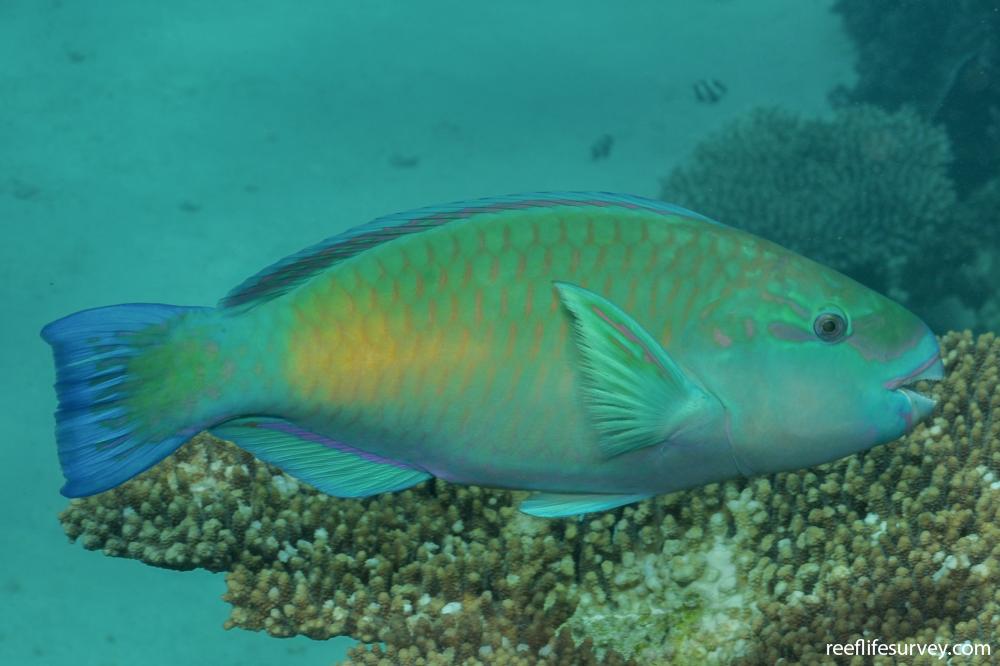Chlorurus sordidus
Daisy parrotfish | Scarus sordidusSimilar Species
Same Genus
Distribution
Tropical Indo-Pacific
Description
Male with flat tail margin, lighter patch (blue or yellow) on or in front of tail base, pink/purple patch on snout (below eye level), and pink/purple streak near outer pectoral fin margin. Females with 2 rows of white spots and long, often reddish snout. Juveniles variable in colour, but often seen with black spot on white tail base. Colouration hugely variable, and all stages except males often change colour rapidly. Head shape perhaps most distinctive and reliable feature. Most common parrotfish at many Australian locations. Some researchers consider C. sordidus to be a species complex and that the Western Australian and Pacific population is C. spilurus. However, we retain C. sordidus for all populations while awaiting further resolution.
Information
Max Size: 40 cm
Sea Temperature Range: 19.1-31.2°C
Depth: 0-50 m
Habitat Generalization Index: 28.37
Also referred to as the SGI (Species Generalisation Index), this describes the habitat niche breadth of the species. Species with values less than 15 are found in a relatively narrow range of reef habitat types (specialists), while those over 25 may be found on most hard substrates within their range (generalists). Learn more here.
Conservation and Rarity
IUCN Status: Least Concern
Occurrence: Widespread (50.1% of sites)
Occurrence describes how often the species is found on surveys within its distribution. It is calculated as the % of reef sites surveyed by RLS divers across all the ecoregions in which the species has been observed
Abundance: Many (20 per transect)
Abundance is calculated as the average number of individuals recorded per RLS transect, where present.
Edit by: Rick S-S







































